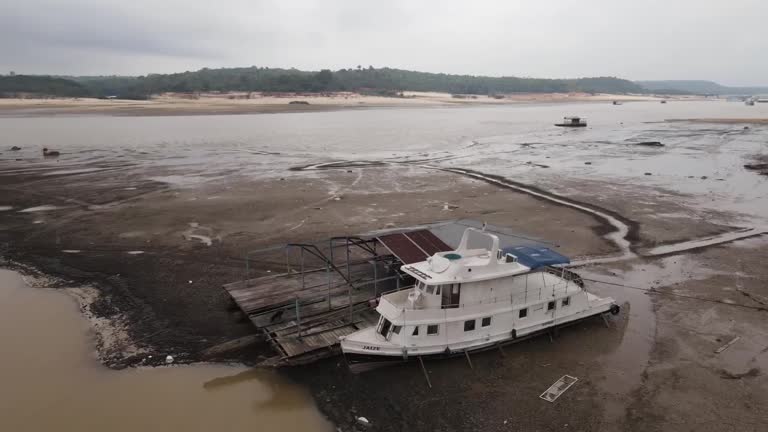
The Amazon River, which boasted abundant quantities, is known to have dried up due to drought.
According to the online system of information on the water level of the Negro River operated at Manaus Port in Amazonas, Brazil, on the 16th (local time), the water level of the Negro River was recorded at 13.59m. This is the lowest level in 122 years since the water level of the Negro River was officially measured at Manaus Port from 1902. The existing minimum water level was 13.63 m as measured on October 24, 2010.
The Negro River, which is about 1,700km long, is the longest water stream that forms the Amazon River. According to the Associated Press, the water level of the Madeira River, another major tributary of the Amazon River, has also dropped record low. Local weather authorities predicted that the water level could fall further in the future as the dry season is still in progress. Recently, the height of the river in the Negro River has continued to fall by an average of about 13cm per day.
Brazilian authorities believe that it is due to the El Nino phenomenon and North Atlantic warming caused by the warming of the Pacific Ocean near the equator. Local media G1 quoted Brazilian authorities as saying, “The drought will continue until the end of this month.”
Of the 62 municipalities in Amazonas, including Manaus, 60 have declared a state of emergency due to drought. The air quality deteriorated significantly due to a series of fires, and residents who made a living on the Amazon River, such as tourism and fishing, were also directly hit. Ecosystem damage is already underway, with river dolphins and other fish dying.
Local daily newspapers, including Polia Jisang Faulu, said on the same day, “So far, the number of residents who have suffered direct and indirect drought damage has been counted as 480,000.”
JULIE KIM
US ASIA JOURNAL



